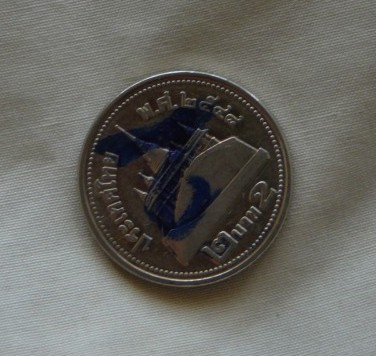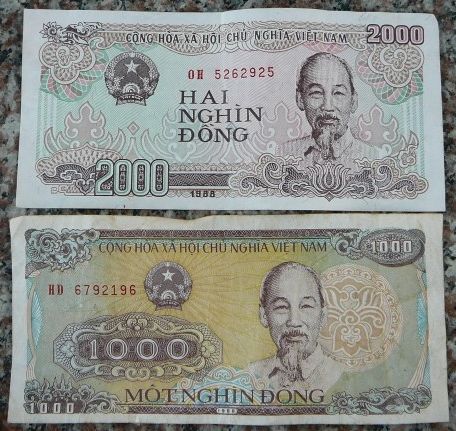User interface to money
Introduction
In the following we look at various features that make the user interface to money suck.
In general, a good user interface to money should make figuring
out "how much money do I have (e.g. in my pocket)" as fast and painless
as possible. A bad UI will slow this process down.
We discuss the most common type of UI, i.e. paper notes and coins
and look at actual examples from Asian countries
(Indonesia, Thailand, Laos, Vietnam, Cambodia, Hong Kong).
Features
Features that make the UI suck:
- The same face (of king, party leader, etc.) as decorative element on every note/coin.
- The nomination (numbers) written in several different but similar-looking scripts.
- Inconsistency about into which corner of the note the nomination is written.
- Large number of zeros on the note.
- No color-coding for different notes/coins.
- No size difference for different notes/coins.
- Acceptance of multiple different foreign currencies in addition to the
country's own currency (e.g. THB and USD in Laos and Cambodia).
In general, synonymy: many different designs standing for the same value
and ambiguity: one design standing for several different values.
Examples
Thailand

The 2-Baht coin is so similar (in size and color) to the Thai 1-Baht
coin that people have started to write a big number 2 on it to avoid the confusion.
Recent versions of the 2-coin have a different color though.
See also
The
2-Baht Coin: Don't get confused.
Laos

The notes for 10,000 Kip and 2,000 Kip look almost identical —
same color, same "face". Also, the nomination is written in different scripts —
Roman numbers and Lao numbers — where some of the Lao numbers look misleadingly
similar to the Roman numbers. The large number of zeros makes things even worse.
When encountering such a note
one has to spend a couple of seconds trying to figure out if it
stands for 10000, 1000, 90000, 9000, 6000, or 2000 Kip.
Vietnam

Vietnamese 1000 and 2000 dong paper notes look too similar.
Cambodia
US dollar paper notes are accepted everywhere but change is usually
given in a combination of dollars and KHR, e.g. US cents are never given as change.
The prices are often quoted in USD. The exchange rate used to convert
between USD and KHR differs depending on the shop but is usually 4000 KHR per USD.
Hong Kong
![[IMG]](../images/P1350922.JPG)
35 of the Hong Kong dollar paper notes that are currently
in circulation displayed at the
museum of Hong Kong Monetary Authority. Two other boards
in the museum displayed the new (year 2010) 1000-dollar notes (3 different)
and two different 10-dollar notes. The 10-dollar notes are issued
by the government independently from the 3 banks [BUG: check].
Hong Kong dollar paper notes are issued by 3 different
note-issuing banks, each using different designs.
The 93/94-designs were updated in 2003 (the 1000-note has received
even 3 updates since 93/94) when the color-coding seems to have
been unified between the banks. The old 93/94 notes are still in circulation.
This has lead to the confusing situation of 40 different notes begin used
to represent 6 different nominations (10, 20, 50, 100, 500, 1000).
(The designs are beautiful though.)
On the bright side, Hong Kong also offers one of the most easy-to-use UIs to money
— the Octopus cash card that can be used in the public transportation
system and many shops/restaurants (e.g. 7-eleven, McDonald's).



![[IMG]](../images/P1350922.JPG)